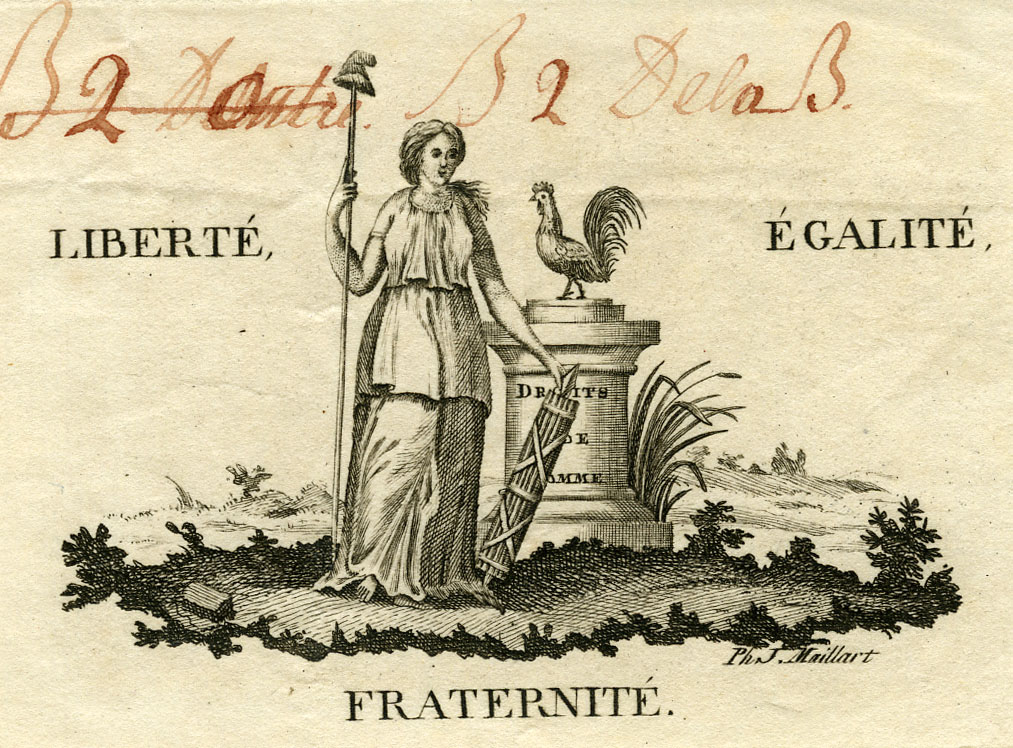Background on Revolutionary-era Belgium

Revolutionary letterhead
During the revolutionary era of 1789-1848, Belgium was ensnared in power politics on a continental scale, with all the drama and turbulence entailed. As part of the Austrian Netherlands, the province of Brabant rose up in revolution in 1789 over political reforms instituted by Holy Roman Emperor Joseph II and for a year, the revolutionaries were successful at expelling their occupiers. Although the Austrians reasserted dominion over the Brabant in 1790, their phase of Belgian history was to be short-lived. In 1794, the region was conquered by French forces under Napoleon Bonaparte, becoming the first territory added to the expansionist Republic.
The Département de la Dyle was one of nine departments organized by a the French decree of Fructidor 14, An III (Aug. 31, 1795) and the region was officially "reunited" with -- or annexed to -- the Republic by the act of Vendémiaire 9, An 4 (Oct. 1, 1795). With 38 cantons organized into three arrondissements named after the department's largest cities, Bruxelles (Brussels), Louvain, and Nivelles, the Dyle was significant to the Republic due to its rich resource base and strategic location. Its virtues were touted in a description that appeared in the Almanach du Département de la Dyle (1804):
L'aspect du pays offer dans son ensemble une des plus belles et des plus riches contrées de l'Europe. Si l'on en except les hauteurs steriles d'Aerschot et de Montaigu, et l'extremité nord-est du department, le sol est part-tout d'une fécondité égale à l'habileté du cultivateur.
Le department de la Dyle est arrosé par trois rivières et un grand nombre de courans d'eau plus ou moins considerable: il communique à la mer du nord par deux canaux. Il renferme une forêt d'une vaste étendue; et sur un terrain extrêmement varié, sand être montueux, il présente successivement des près, des bois, des vallons et des plaines. Un pays aussi riche doit être animé par une grande population; aussi trouve-t-on répandu sue une surface de 116 lieues carrées, 387 communes, 558 hameaux, 398 fermes isolées, 302 moulins à eau, 115 moulins à vent, 139 châteaux, et un nombre considérables de maisons de campagne.
The French occupation of the Brabant was no less turbulent than the Austrian, in part due to local resistance to French rule and in part due to imperial conflict. A coalition of English, Dutch, and German forces liberated Belgium in the spring 1814, and the region was absorbed into the United Kingdom of the Netherlands after the Battle of Waterloo, reuniting the southern and northern provinces of the Pays Bas that had separated in the sixteenth century. Even that union dissolved, however, in the revolution of 1830, when Belgium finally won its independence.

